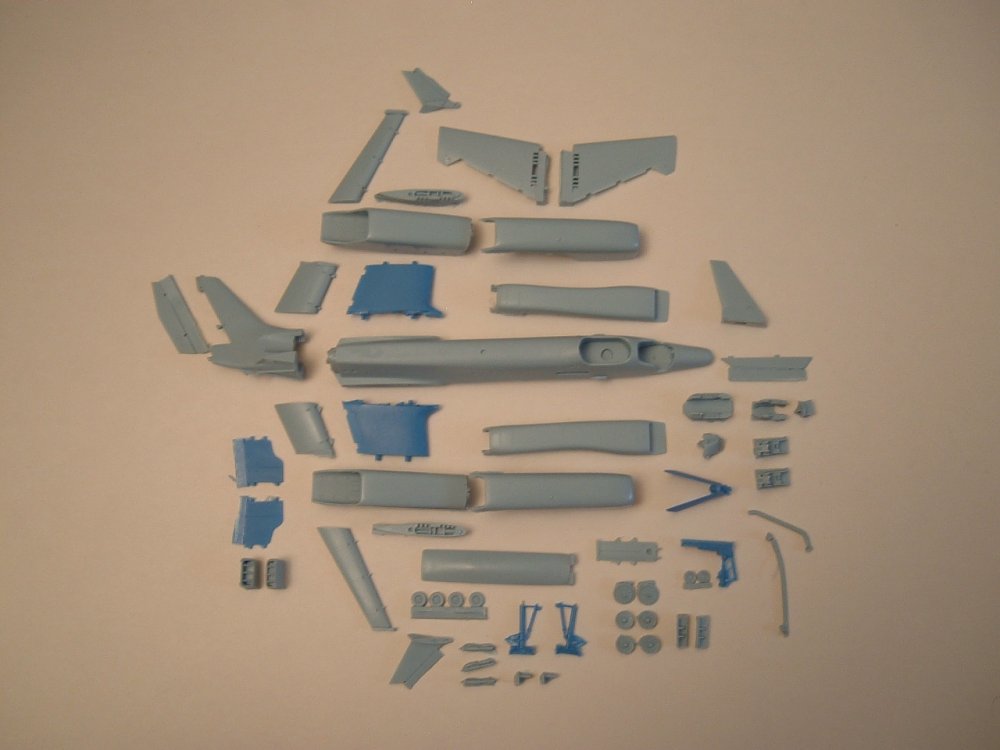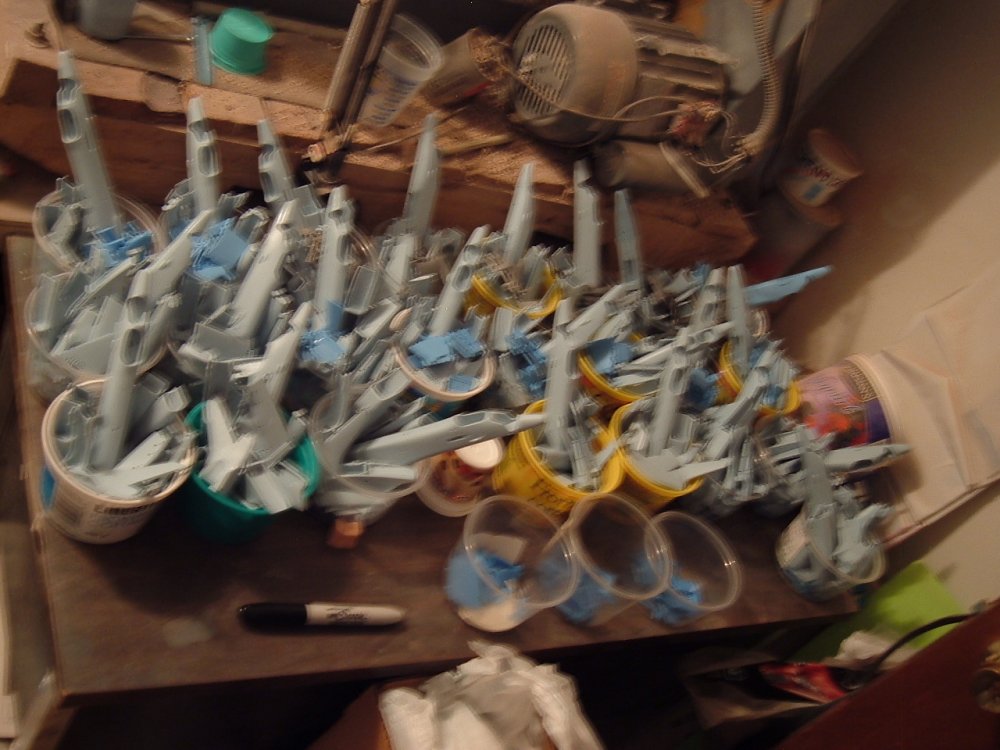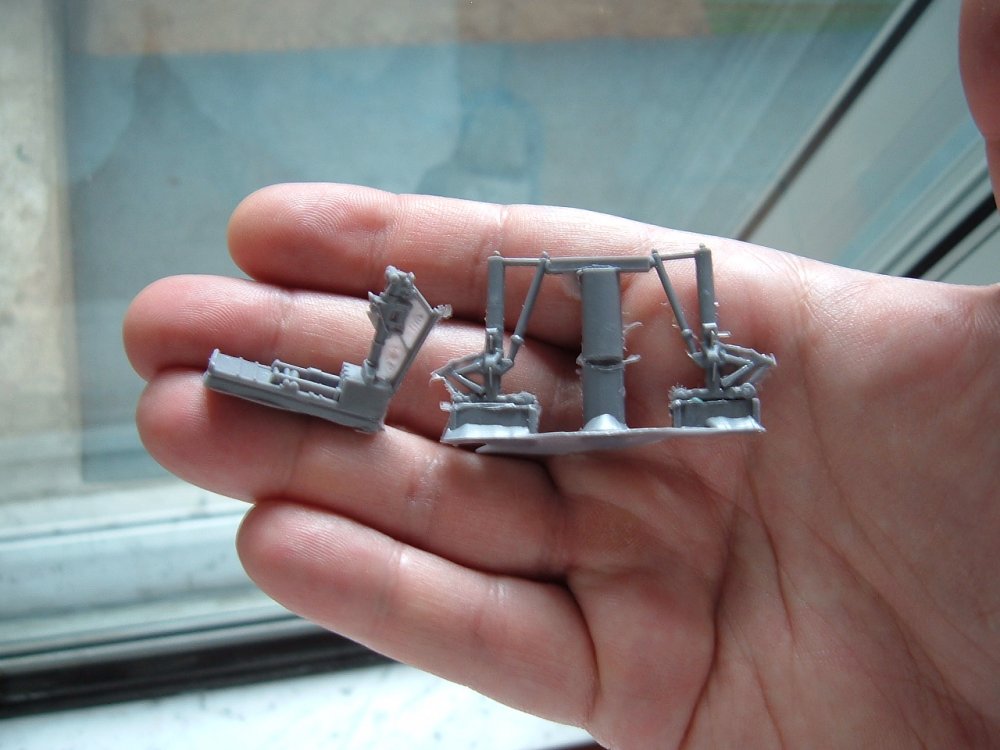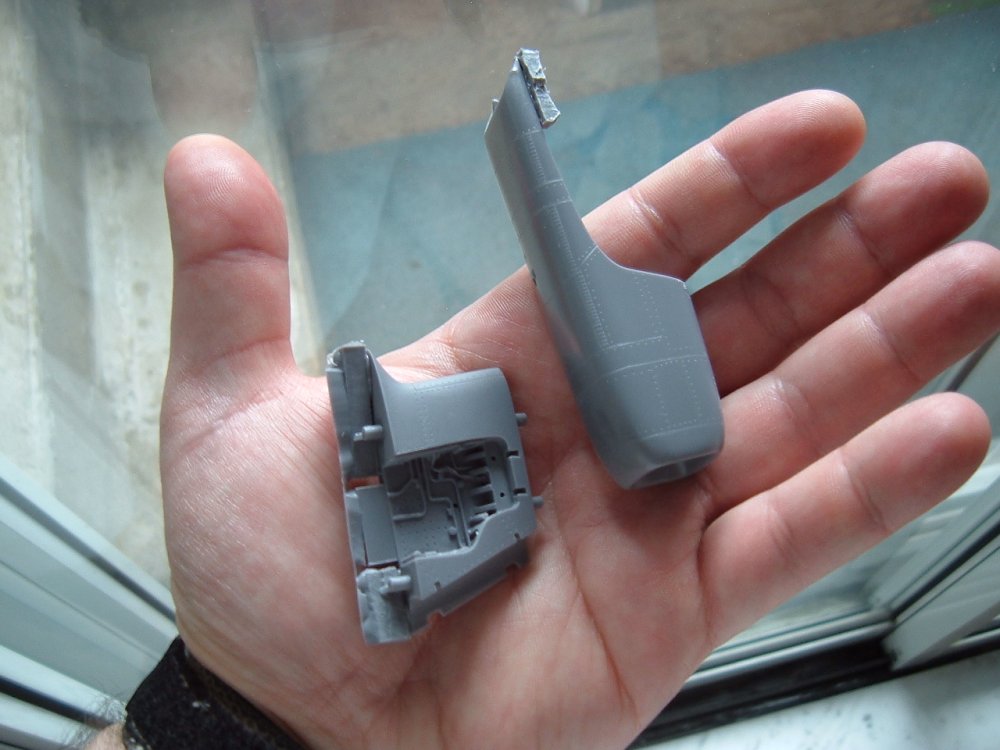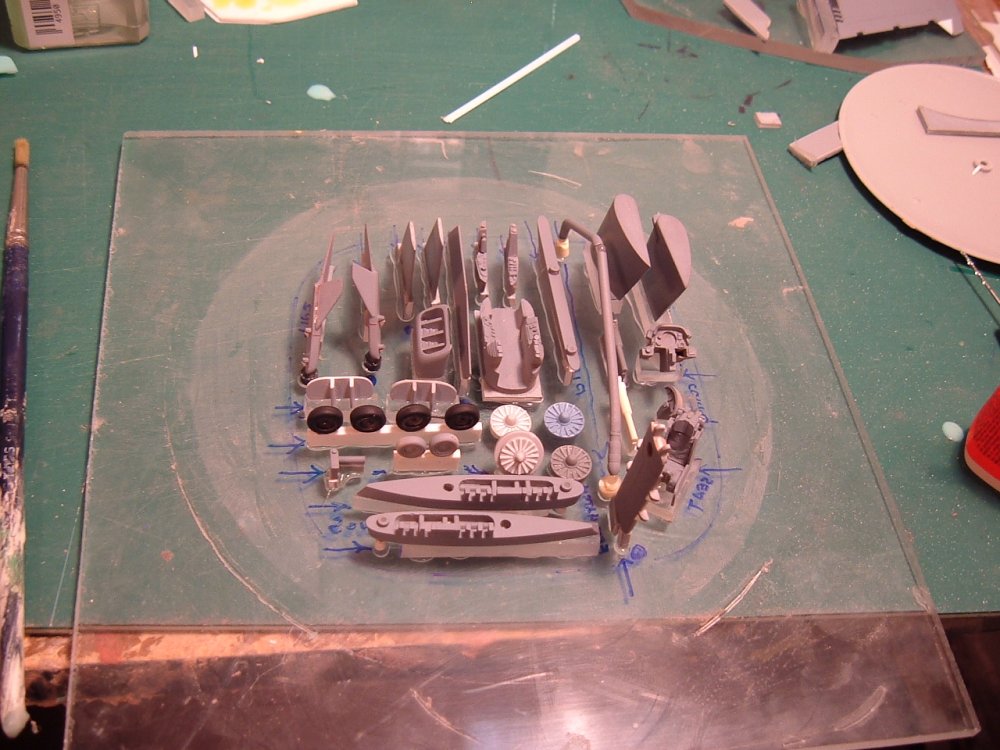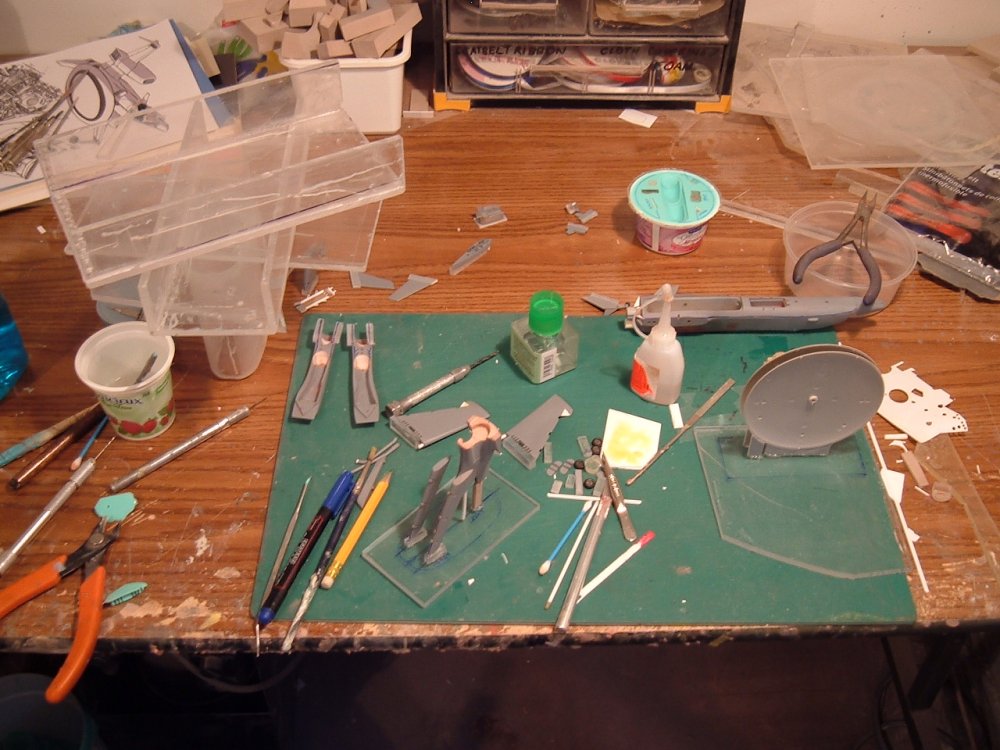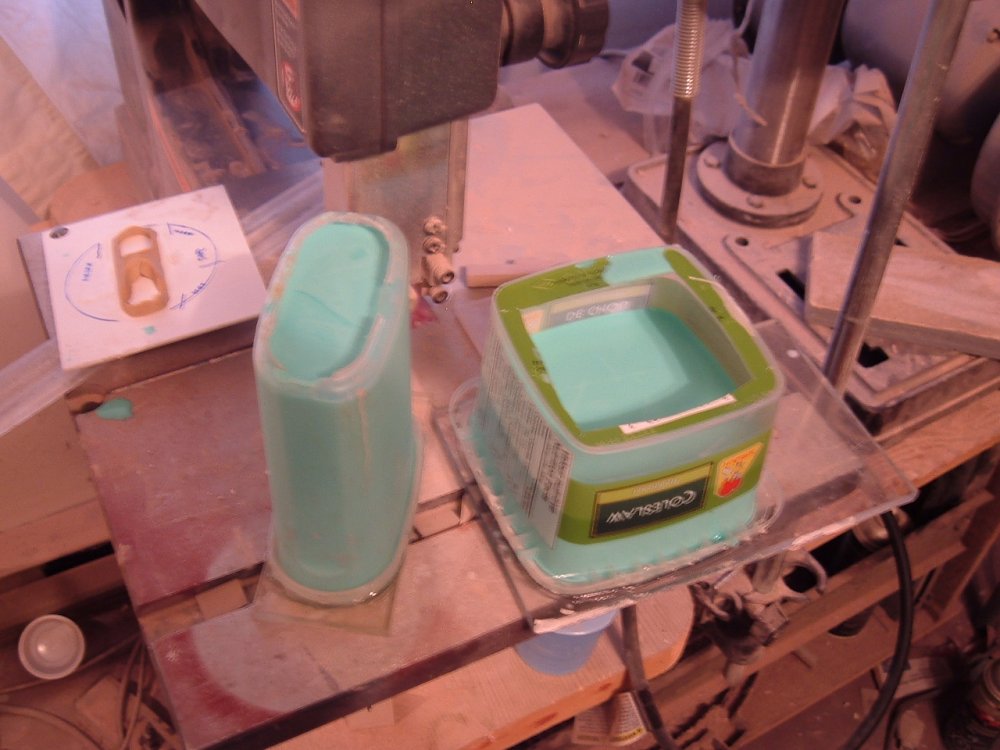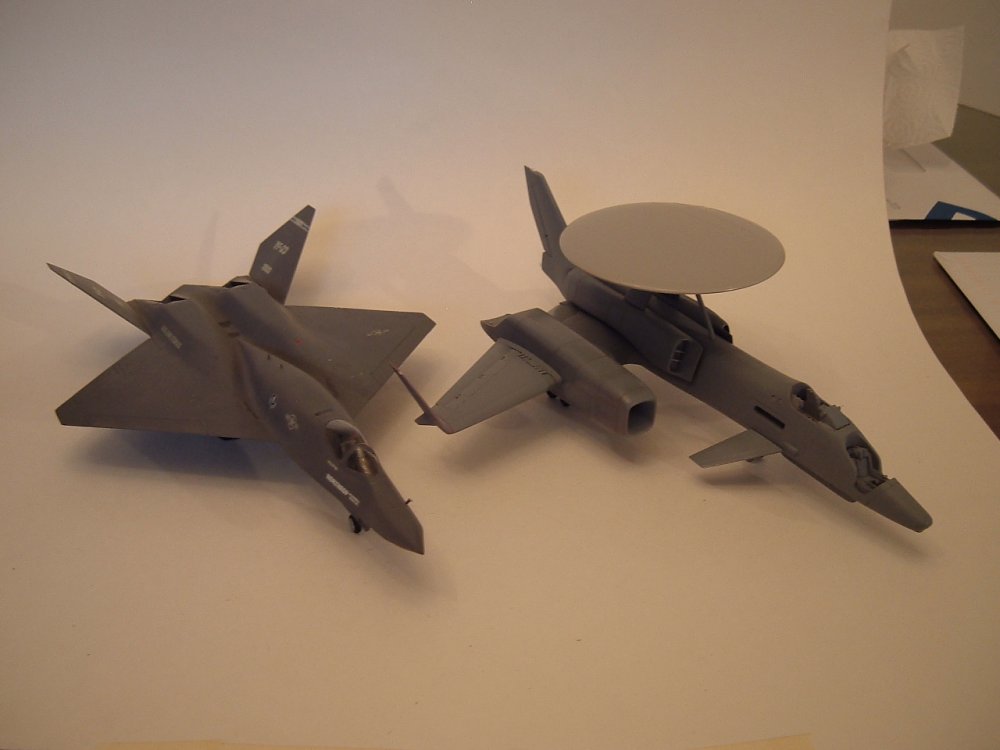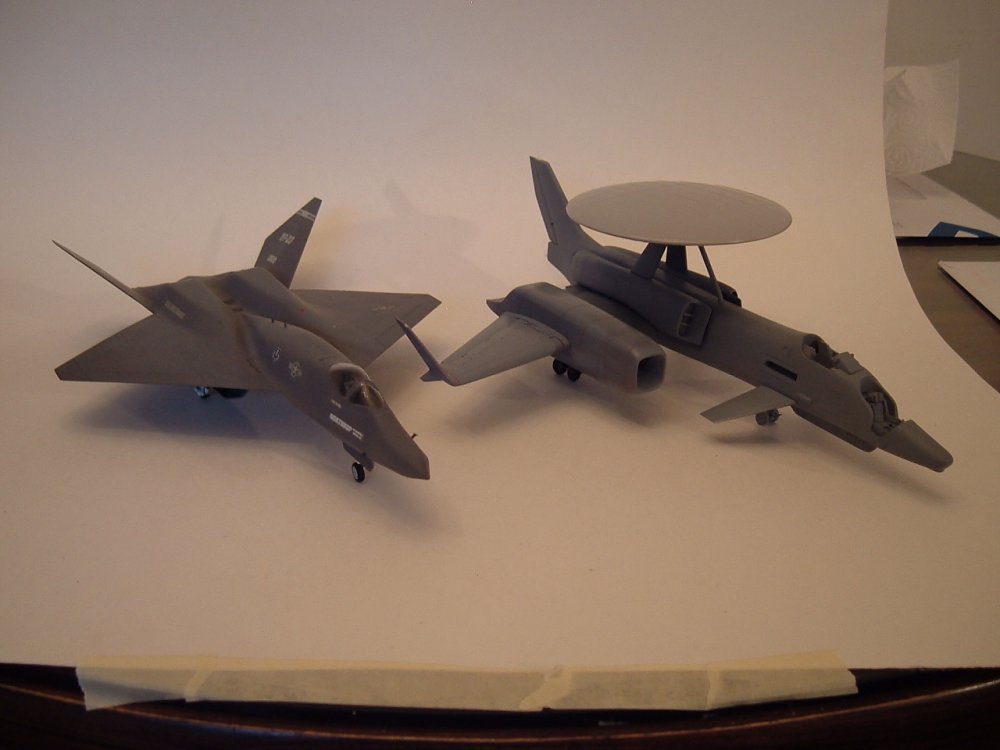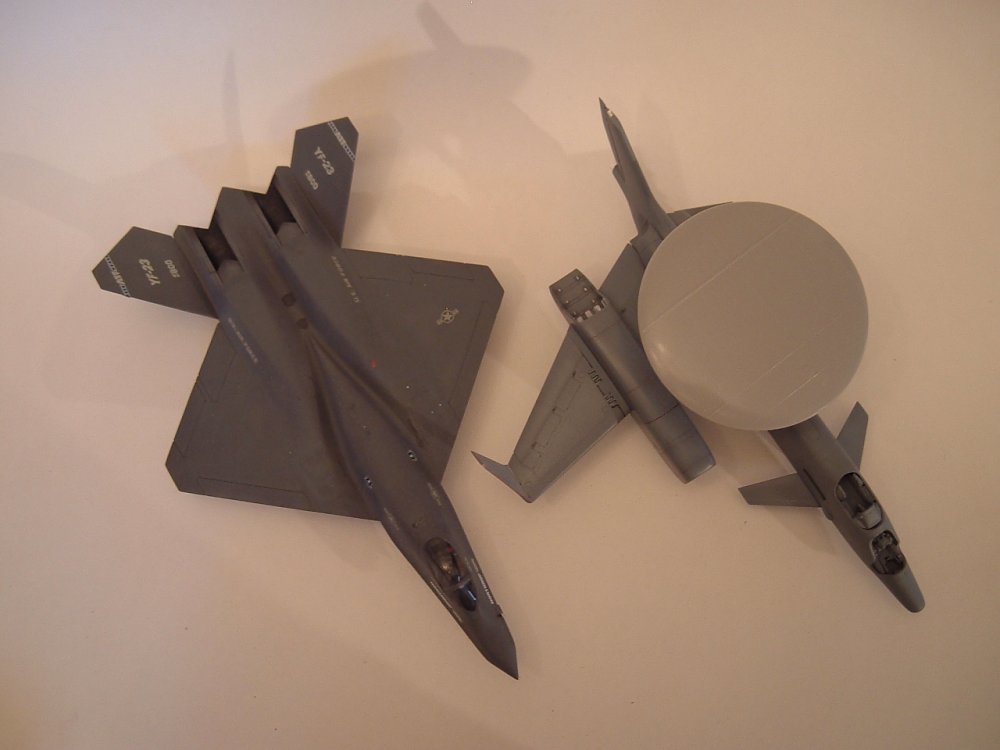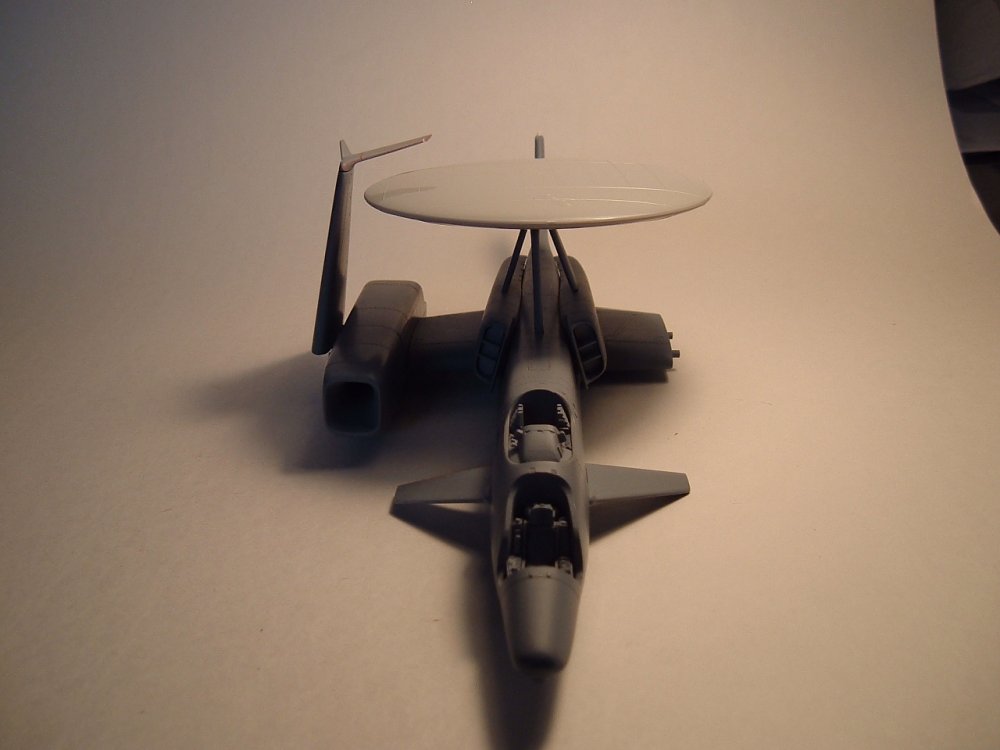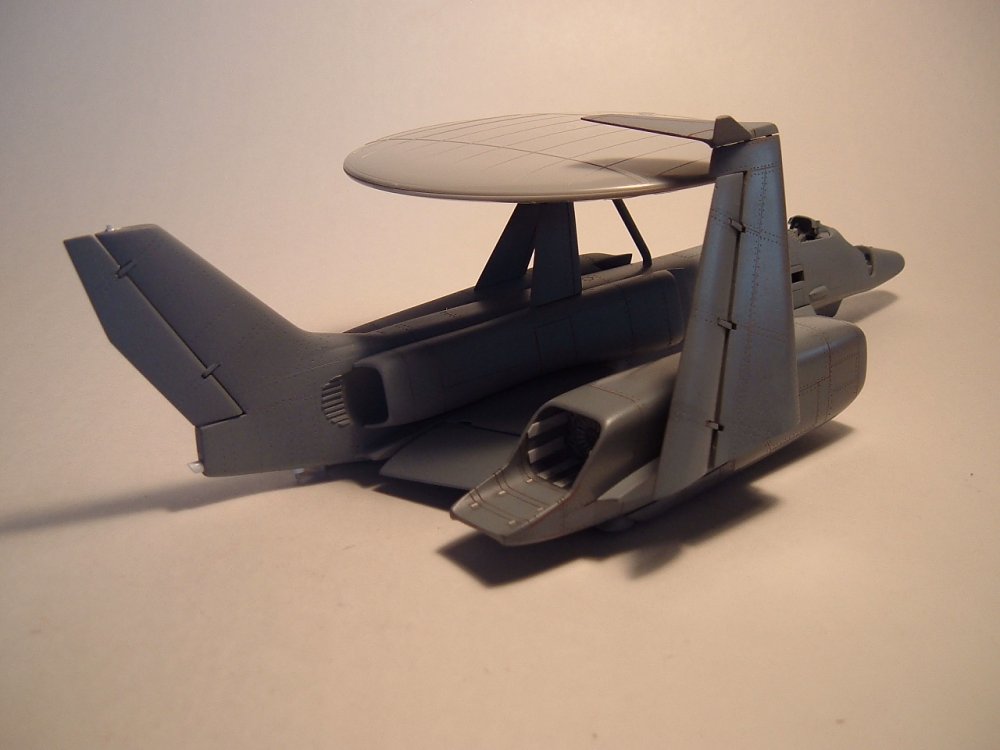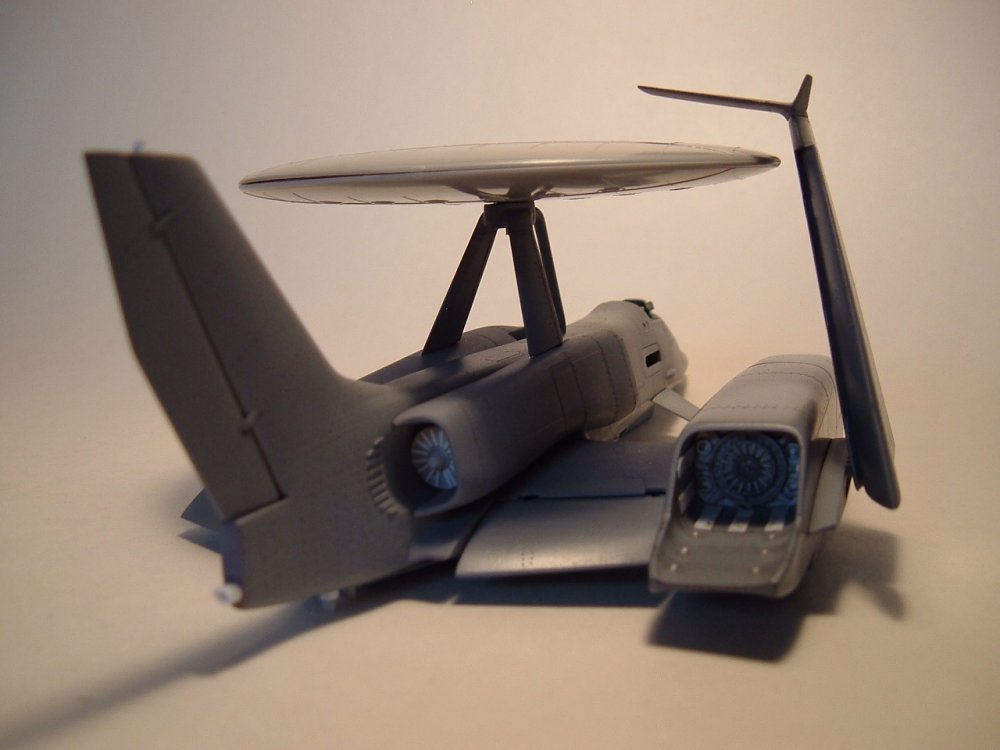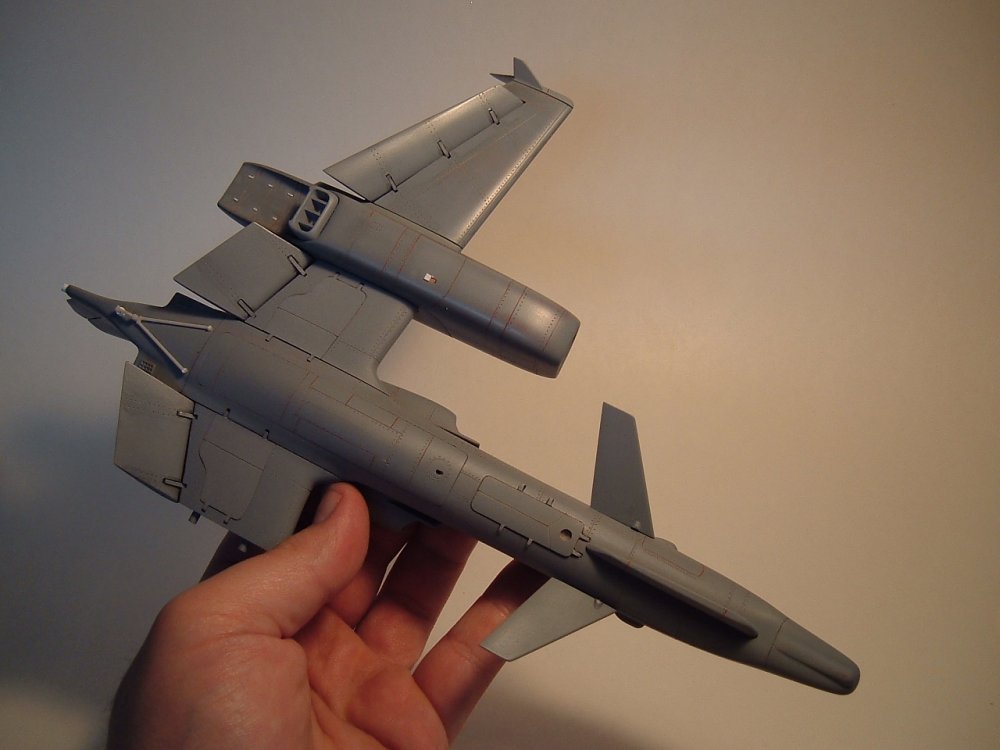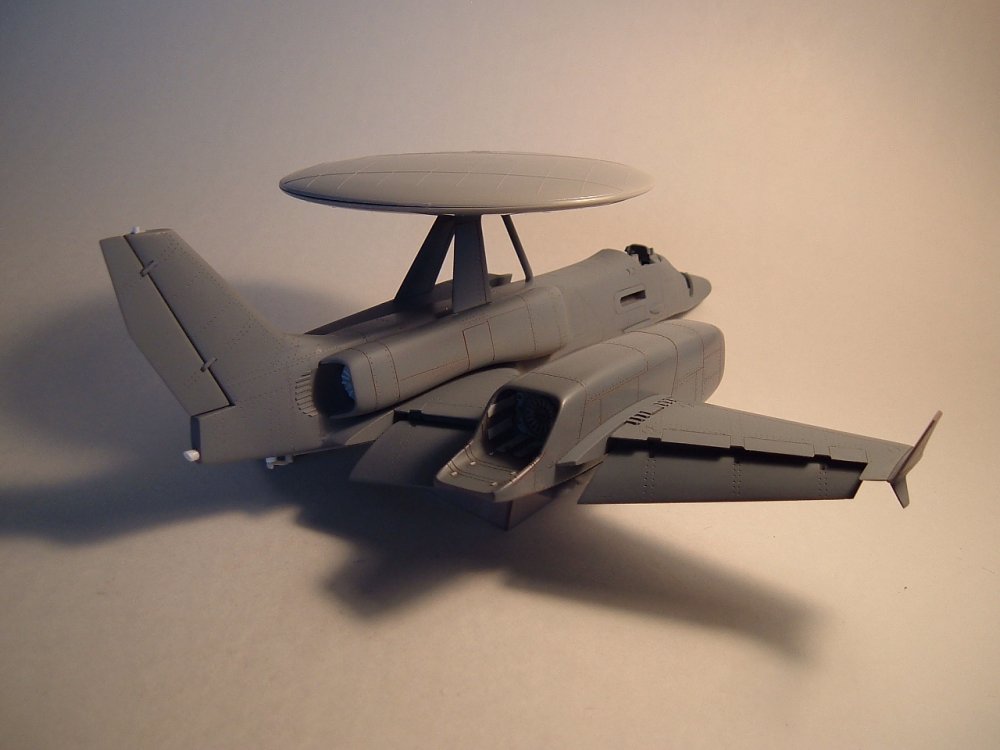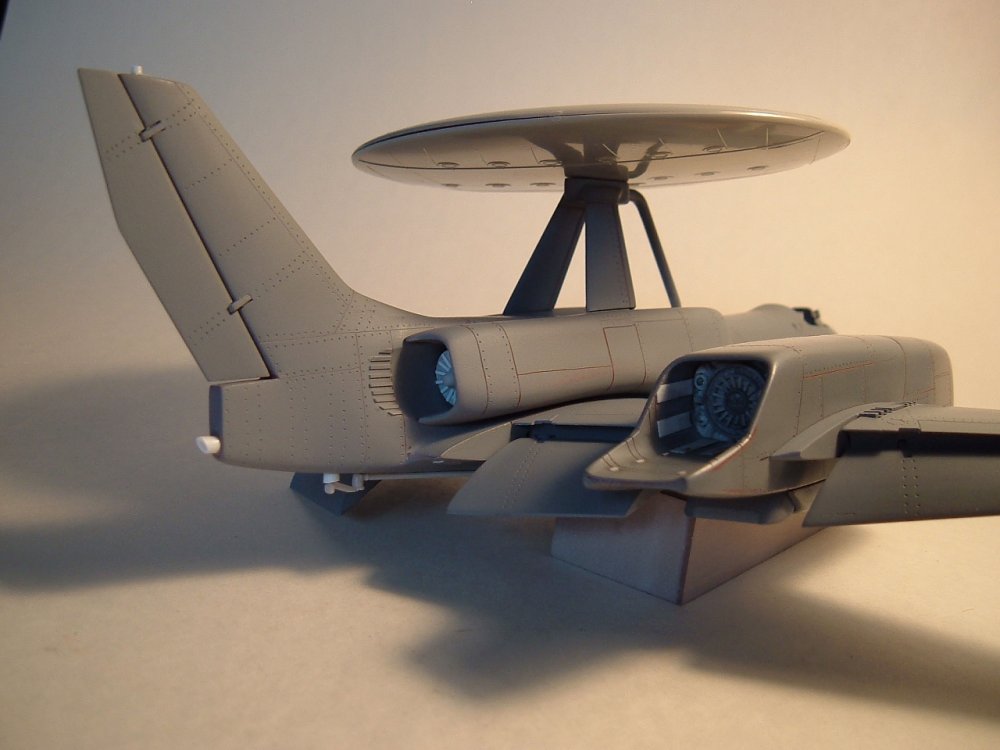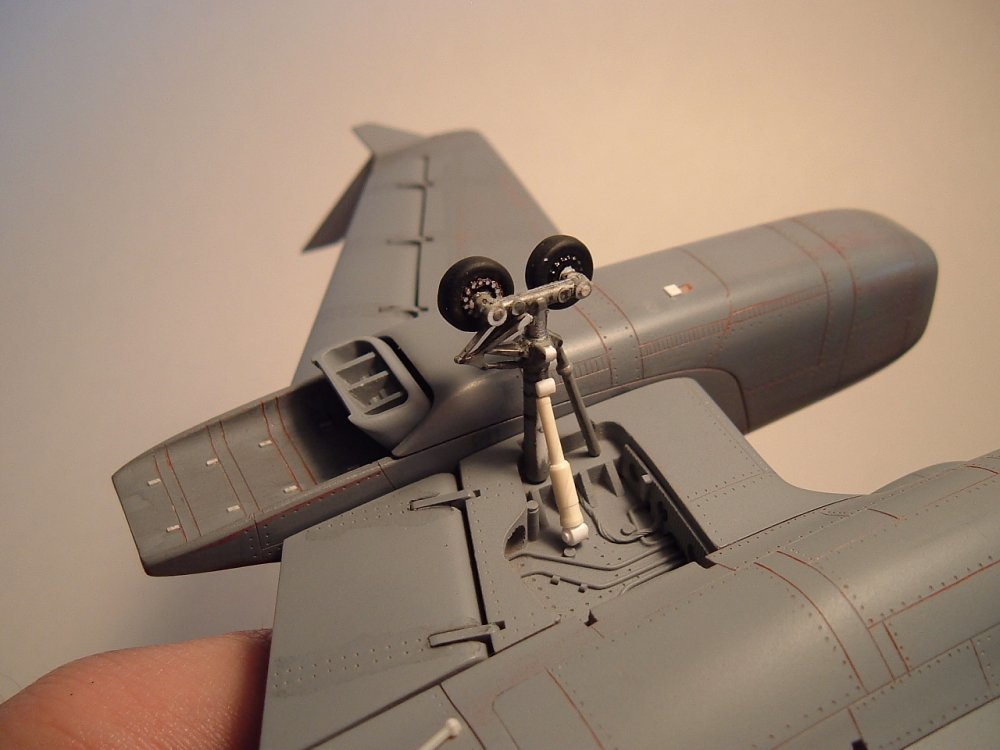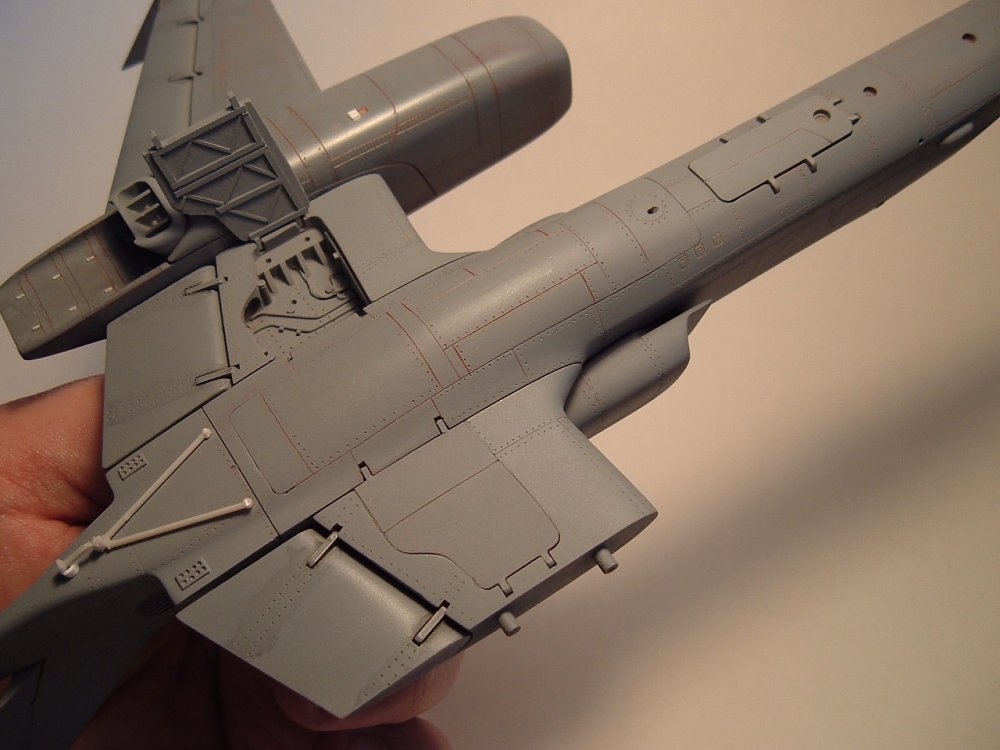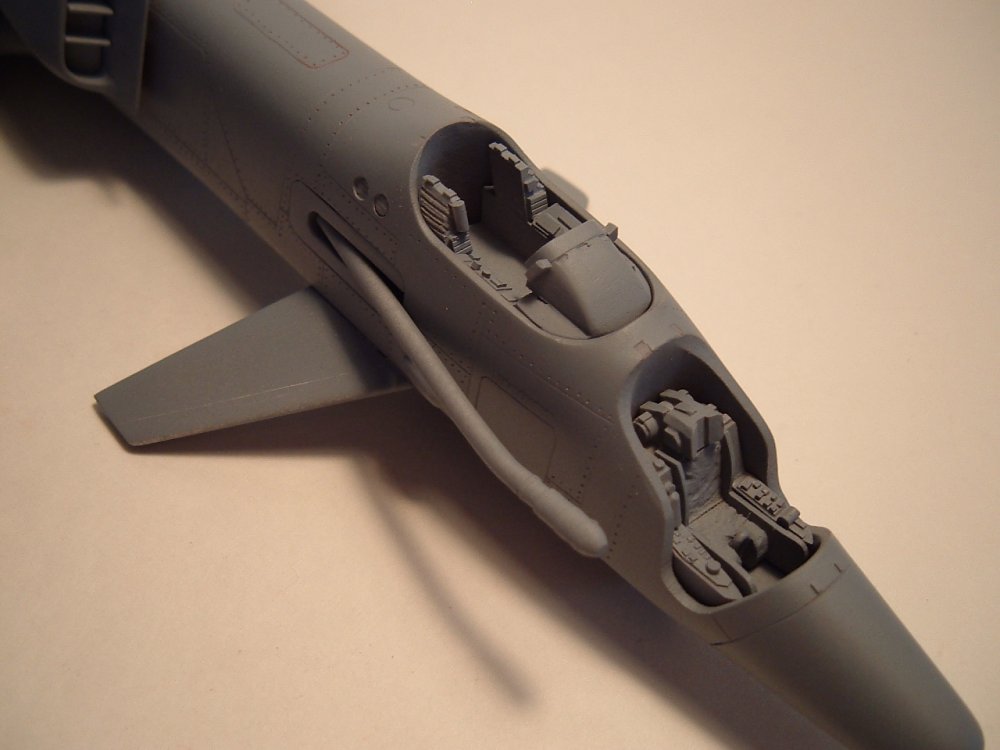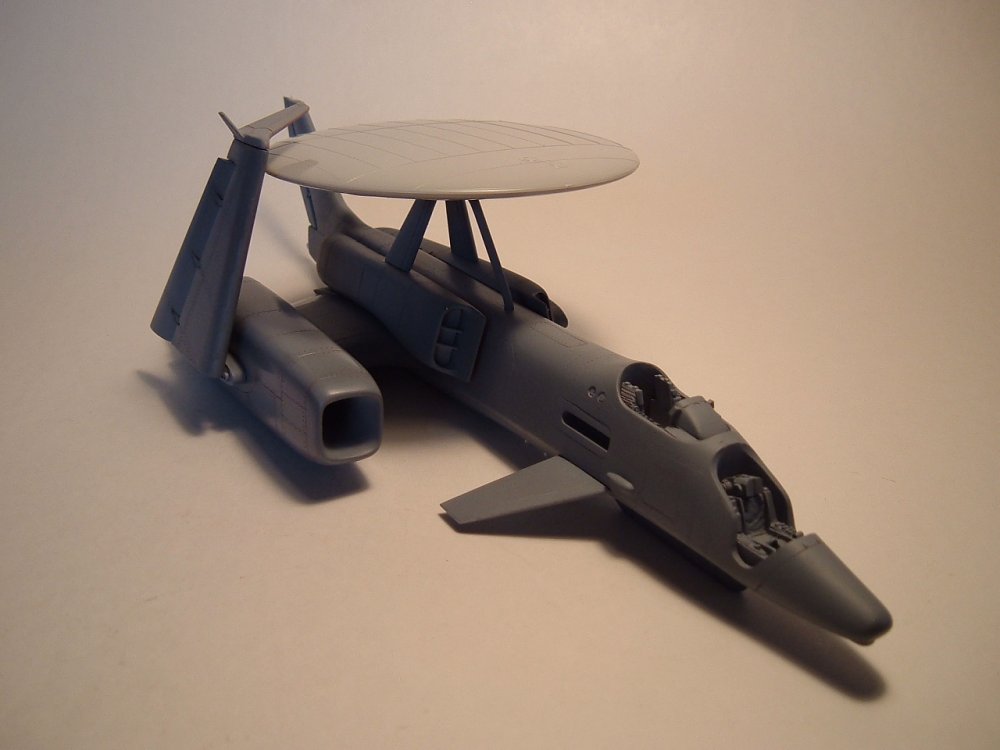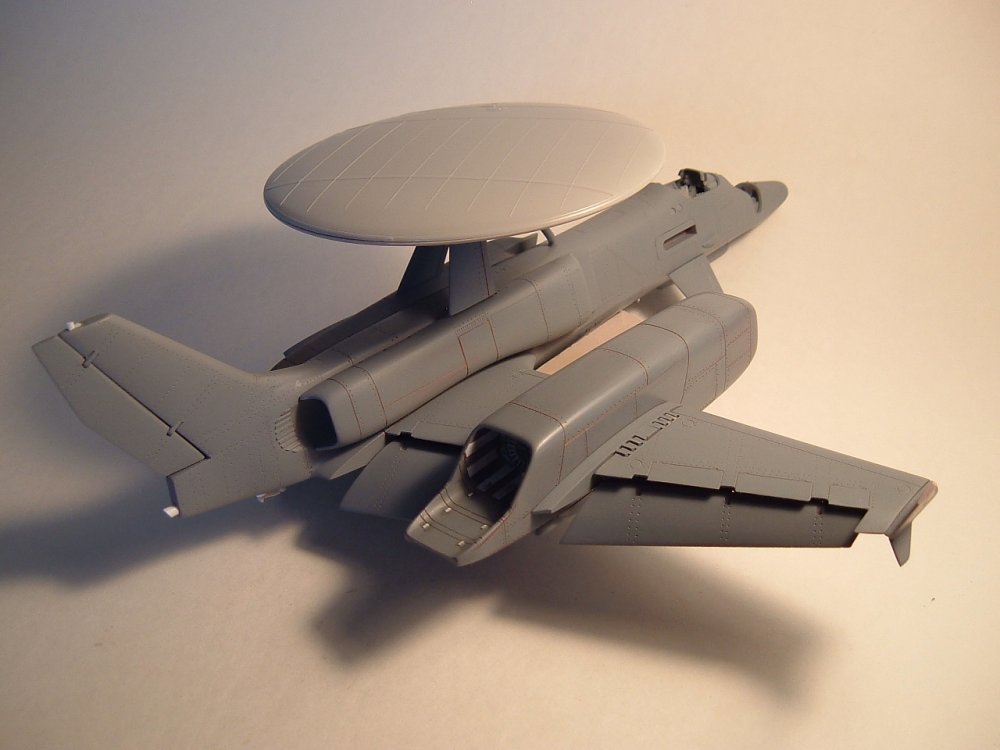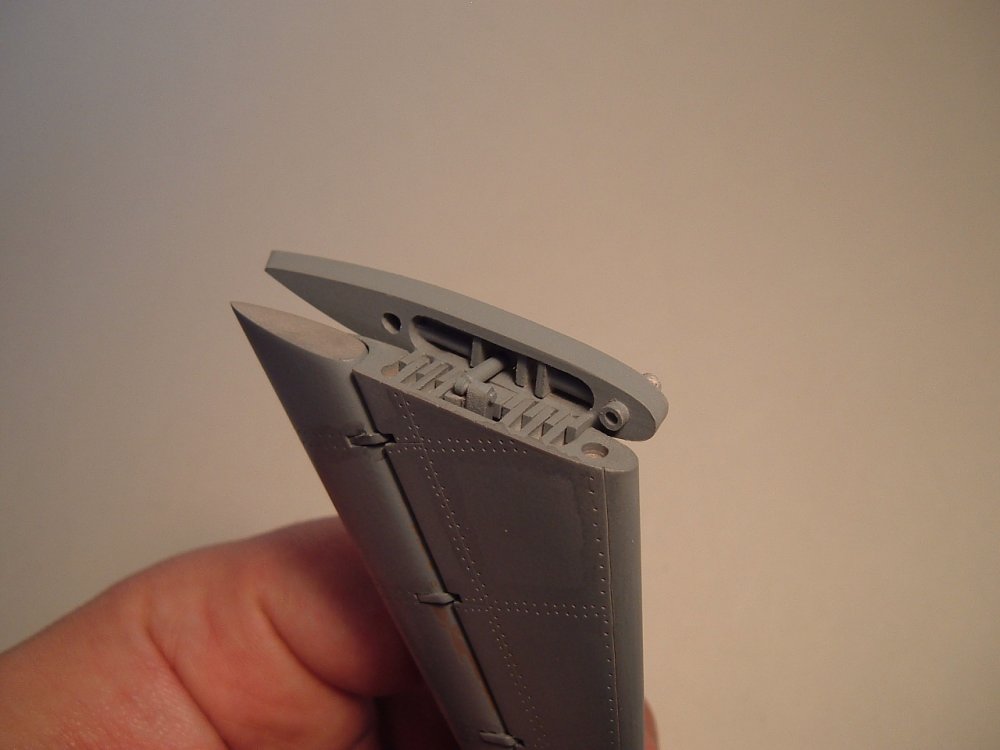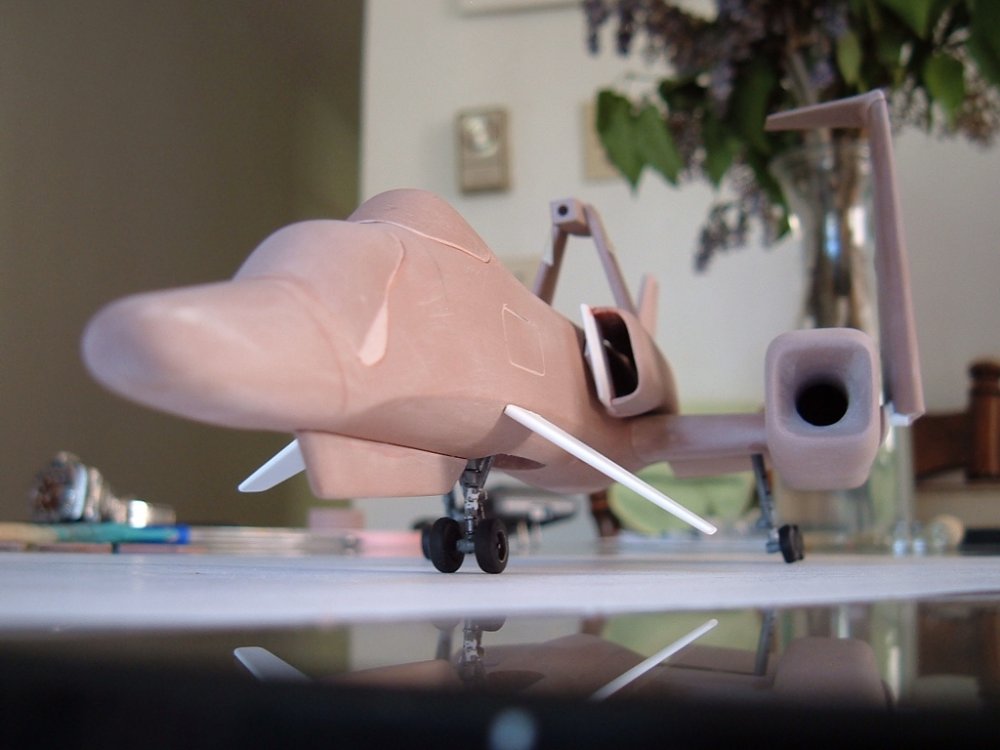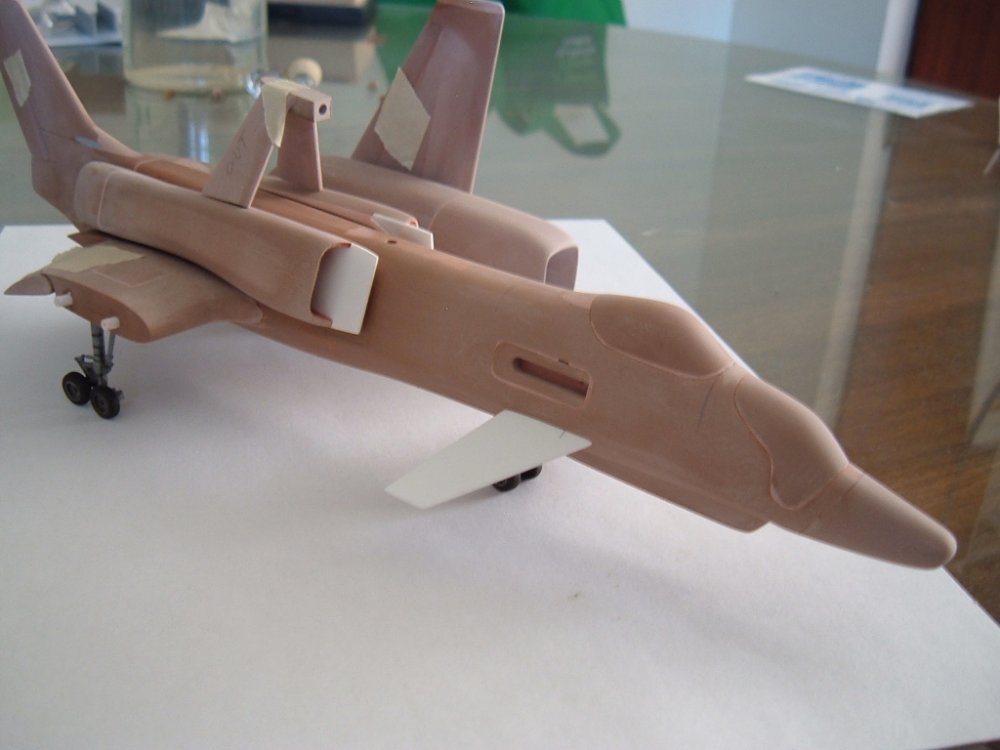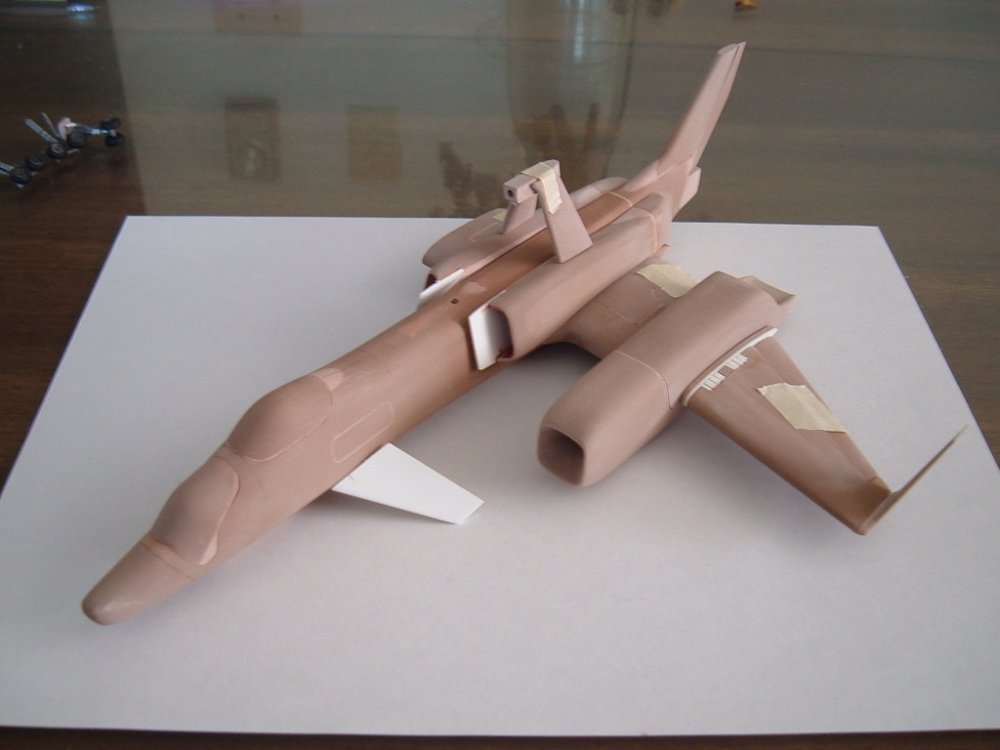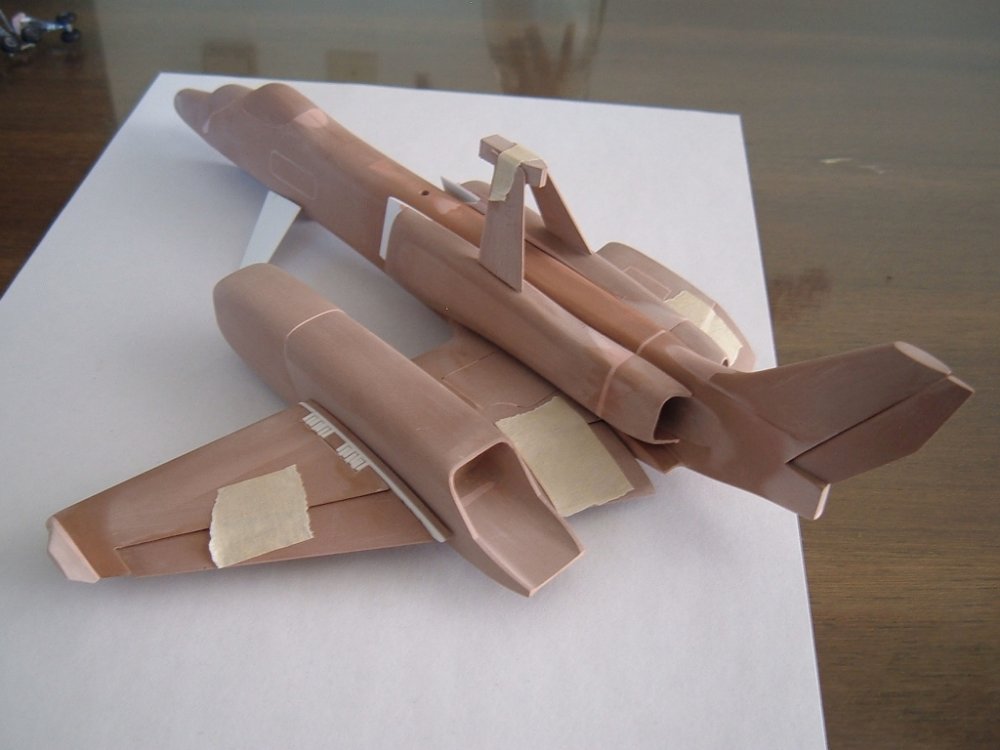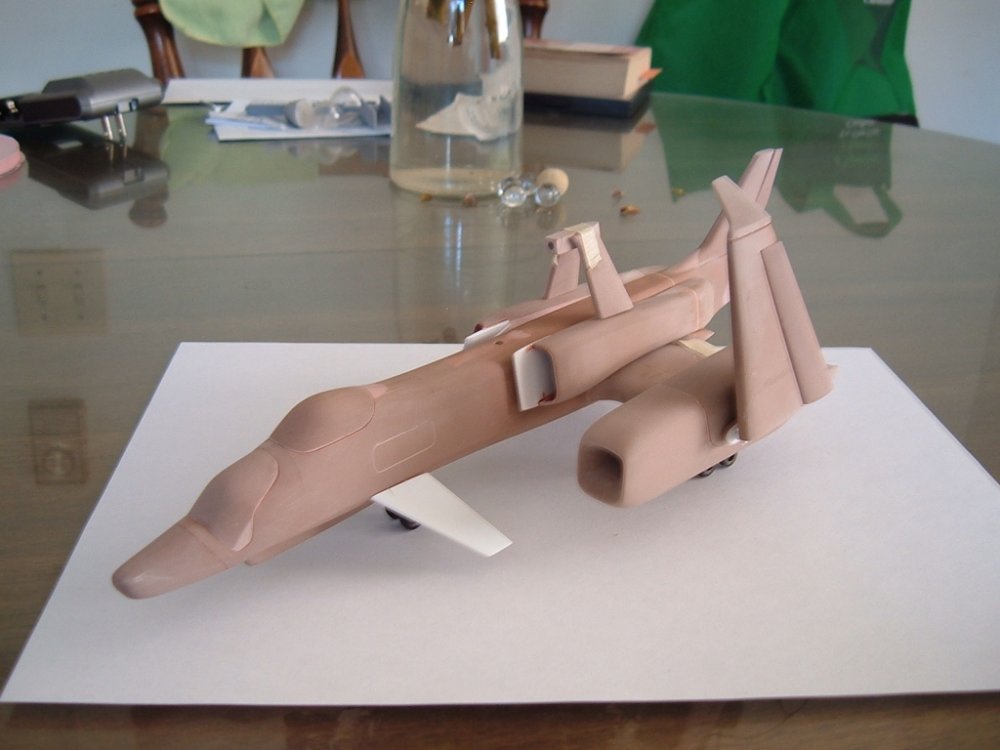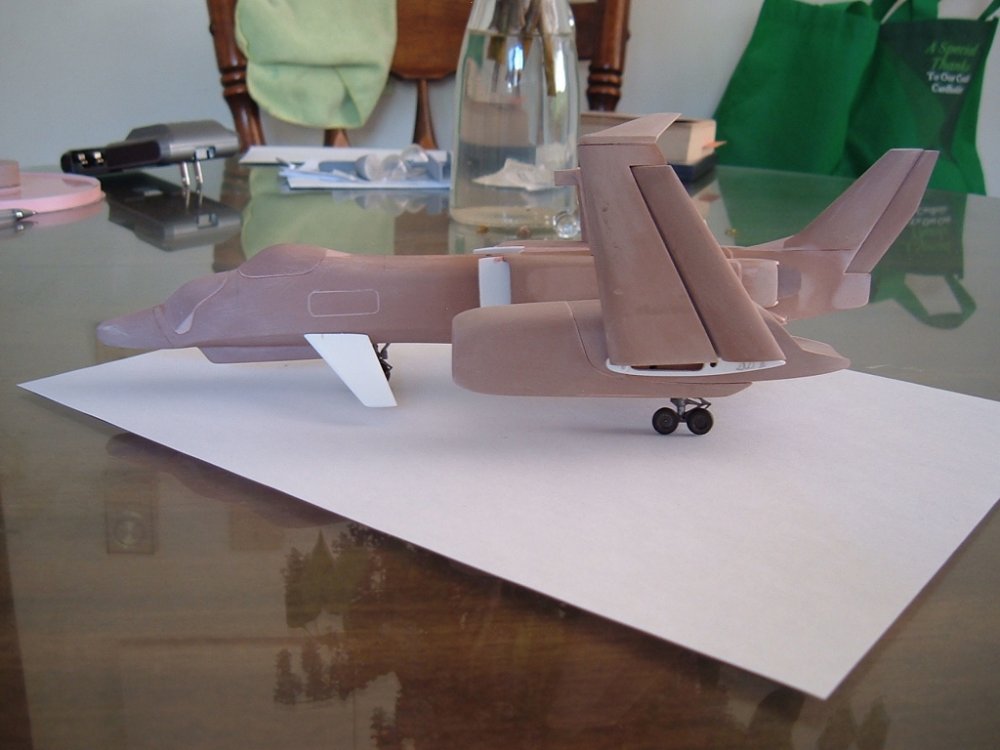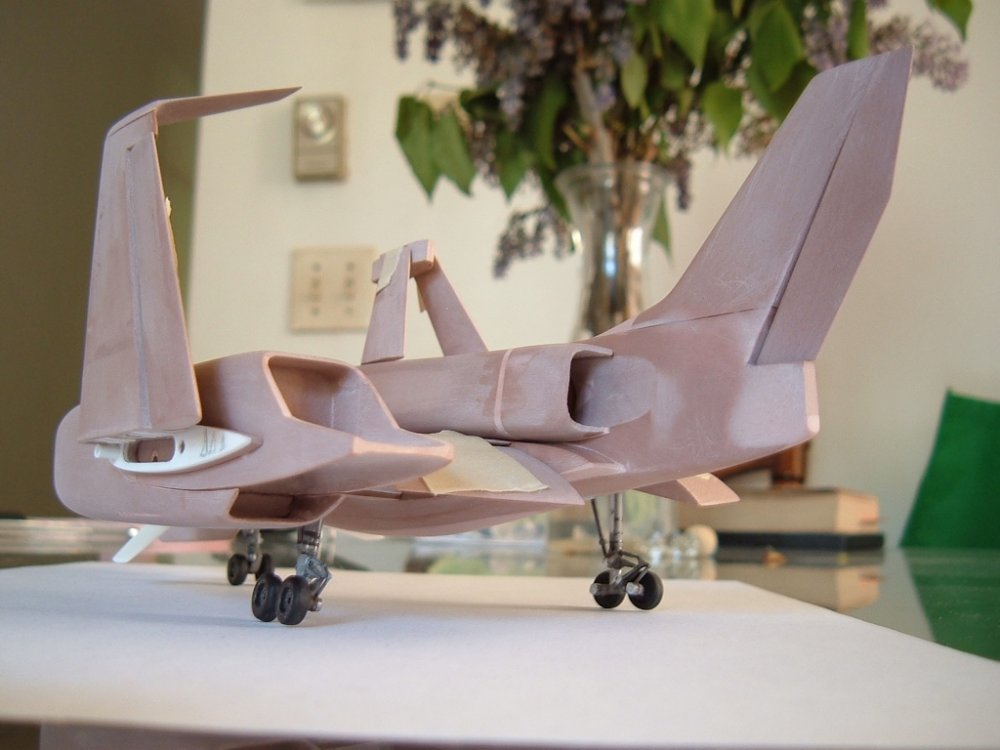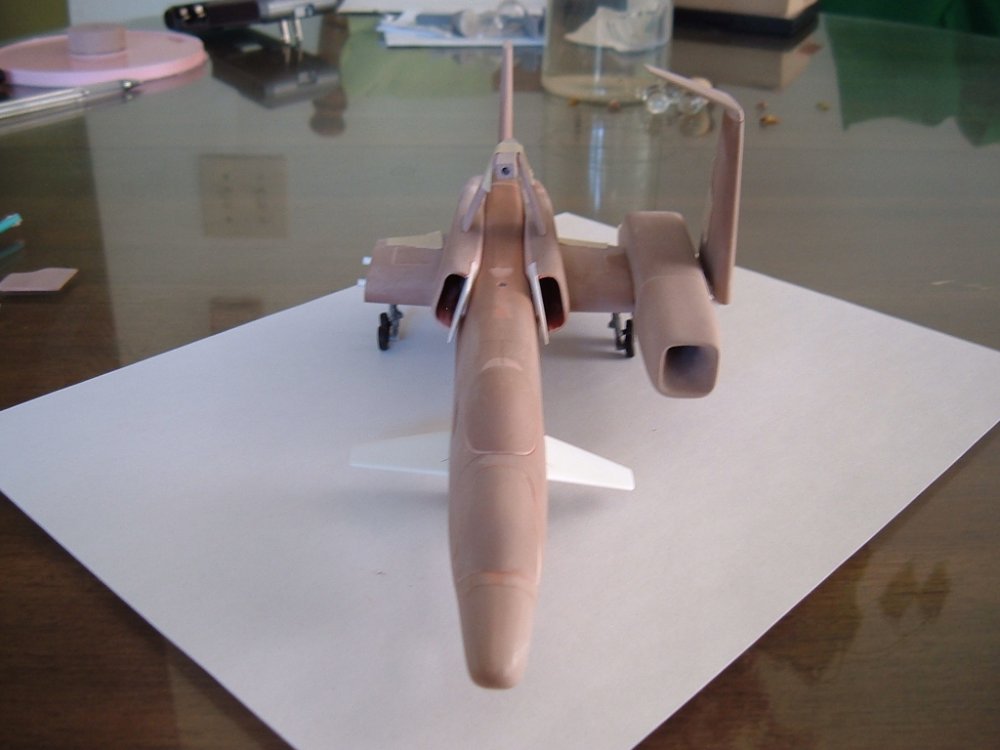-
Posts
3553 -
Joined
-
Last visited
Content Type
Profiles
Forums
Events
Gallery
Everything posted by captain america
-
Tactical blue Quick update! Casting is going great; I've got 25 kits ready thus far, and have already re-poured a couple of molds, which is why in the exploded pic, there is no radar dish. Some of these are cast in 2 pieces (hollow) and the later versions will be 1 piece and solid. I don't foresee the extra weight being a problem, otherwise I would've just kept it hollow. Please forgive the shaky studio pic; for whatever reason, I just couldn't get my camera to cooperate. Also, I'm still waiting on the epoxy for the canopy bucks, so just another delay in the food chain, but nothing terribly unexpected. P.S: the deeper blue parts are the high-strength polymer--the one you have to bake in the oven.
-
Nope, purple is out, tan is in I figured that I'd kept the purple for the first 5 years, and figured that after that milestone, we'd be due for a change. No more grey resin either
-
Not flesh, porymer lesin
-
Hi everyone! Ok, as per my previous message, today kicks-off payment time for the Kaa-'Tsai, so here's the breakdown. -Each kit: $185.00 Shipping for North America: -1 kit: $16.00 -2-3 kits: $25.00 International shipping: $35.00 per kit Payments are to be accepted through Paypal, and as before, please add 4% to the total ( kit(s)+shipping ) For those of you who are new to dealing with me, you can just send me a PM with your full name & address, and I'll give you the necessary Paypal info. Important notice: I already have about 12 kits cast, but there will be an undetermined delay for the canopies, so I thank you in advance for not ripping my head off (' ) That having been said, orders will be processed on a first-paid basis, and as always, I remain at your disposal if you have any questions. I'll also be posting a pic of the overall parts breakdown early next week. I think I lost count at 64...
-
...And after lots of coaxing, praying and troubleshooting, I'm happy to say that the most delicate and pivotal parts of the kit have been cast, and the results are just excellent! You may not be able to tell, but the landing gear has 1mm brass rod going through the main shaft of each strut, and is likely strong enough to support 4 times the current model's weight. Anyway, I will have at least one fully cast model by Friday and will be able to calculate the proper shipping weight of the kits. Stay tuned
-
Hi everyone! Forgive me for being a little tardy in my updating; I had some molding problems that forced me to work all weekend, so the updating was put aside. Anyway, now that that crisis is taken care of, I thought I'd post these pics of my mold prep shenannigans! Pic 1: here are a whole slew of teeny, tiny parts that have been glued into place. The mold box will fit around the parts and then some minty green goop (rubber) will be poured over them to make the mold. Pic 2: various other parts are also in line to be molded. Mold prep is actually a very long and delicate procedure, especially when you have many different parts in one mold, since you can end up ruining days of work if it doesn't come out just right. Pic 3: remember that green goop I was telling you about? The rubber takes about 24 hours to harden sufficiently to be removed; very problematic if you encounter a "mold malfunction" cos you can't just clean the liquid rubber off, you have to wait a whole day or risk making even more of a mess. There are a few parts that had me worried, like the landing gear and wheel wells because of all the impossibly-thin pieces.
-
Hi Petar. I'm thinking that I'll start accepting payments around the 18th; once I've actually gotten some castings and worked-out the shipping. As always, I want to make sure that the castings are of acceptable quality before I accept any payments.
-
Yup, no change in price. I will be able to get some castings as early as next week; the only real delay will be the canopies, since I'll be farming those out.
-
Where are my f#@%*(#%^$%^ wings???
-
I never thought I'd say this, but I would have to agree. Then again, a wife-beater shirt and jeans would be better than that God-awful glorified halloween costume reject in the promo pics. The Captain votes Epic Fail!
-
I think the best word to describe the plane is "adequate." I provide the raw basics for the modeler to unlock its potential with their talent. There aren't any fixed commitments to the kit as yet, since I won't start collecting $$ for at least a week or 2, so feel free to climb aboard; still room left.
-
Hi Carl. In my head, I never saw the black circle on the dish as a panel demarcation. It's actually REALLY easy to do with paint or decal though; just run a compass cutter over either some Frisket film if you prefer paint, or a sheet of black decal and the job is done. 3 minutes tops if you're slow. I wouldn't recommend doing a scribed line over the top due to the layout of the raised antenna pattern, but that's just me.
-
-
The sto-wing option. As you can see, the wings fold up into a neat little package I'll wait until parts are cast to take more landing gear shots, since the fact that I don't have a second outboard engine screws up the balance and I don't want to take the chance and damage the gear. Naturally, parts are now on their way to mold prep, but sufficed to say, this turned out to be a much cooler project than even I had hoped.
-
-
Landing gear and refueling probe. I opted to make the latter an "extender" version, since I feel it's important for the probe to be in the pilot's field of vision for obvious reasons, and the possible places to put it were very few, given the plane's design.
-
-
Definitely. That's one of the problems with making a kit from a multiple-generation cast: the parts look OK to the naked eye, but there develops so much distortion with each generation that the parts no longer fit together. Putty, patience and prayer are the three pees needed for such kits Heads-up to everyone: the next update might have to wait a few days because I've got parts strewn about everywhere. The tiny detail stuff is the most challenging and time-consuming and I don't want to rush it.
-
Hi Petar. Excellent question, and you're right: you can't slide a piece of paper between them cos the parts fit together like a hand in a glove. The process I use to make the bucks fit so seamlessly is the same procedure I use whenever I have to mate two complex shapes together. I start by carving one shape (in this case, the cockpit tub) and make sure that the shape is just the way I want it. Next, I carve the canopy buck and get it to fit as closely as possible with machining and hand-carving. Next, I apply a spray mold release to the cockpit tub, then smear Bondo all over the mating side of the buck and squash it into the tub and wait about 3 minutes for the Bondo to start to firm-up. Then, I carefully pull the buck out, let it harden fully for a few hours, then do the final finishing. Not hard to do, just watch out for the putty fumes, they're nasty!
-
Panel lines: couldn't agree with you more, so lots of panels and lots of rivets (in the right places)are a must. Wing lights: not practical to make in clear resin due to size in this scale, but you can do this even better yourself by filling the light housings with white glue/Future floor wax and a bit of paint, or even using epoxy. In my 30+ years of modeling, those techniques yield better results than trying to file the flash and mold line off something the size of a large grain of sand. Dimensions: @ 28mm long, by 26mm wide. No idea how that compares to Tanmen's kit because I don't have it.
-
-
Captain's log, Friday, May 21st. She's almost done! There should be another two updates left and the Kaa 'Tsai will be ready to mold. In spite of the fact that it looks like a drunken sailor barely able to stand on his wobbly legs and just looking like total @$$ in the photos, I assure you that this is because it hasn't been primed yet, but the shape of the plane is there, and it's a beauty! Sadly, because of the delicate nature of the parts, it's rather challenging to get the whole thing to hold together without unsightly masking tape and a little drooping here & there, so I must ask that you bear with me just a little longer. I promise, it'll be worth it. While I won't go into another overly-verbose explanation of all the pics, I'll just touch on a few important pieces of info. -Radome: will be modified from a 1/72 E-2 plastic kit radome and will therefore be made hollow on the kit. -As mentioned previously, the landing gear will be reinforced with brass bars. -The rectangular opening on the starboard side, below and slightly aft of the rear canopy is the hatch for the mid-air refuelling probe, and you'll be able to build it recessed or deployed. -Canopies will be vac-formed, just like the Commanchero. -I'm exhausted, so I'm going to go have a little nap and maybe some ice cream later.
-
It'll be incorporated into the castings, just like with the Gnerl fighter pod.
-
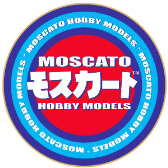
1/72nd scale monster V2.0....any interest????
captain america replied to mslz22's topic in Model kits
:lol: :lol: -
Everyone knows that a unicorn is just a pony with a strap-on :lol:

